 Weird Stuff
Weird Stuff  Weird Stuff
Weird Stuff  Mysteries
Mysteries 10 Tragic Disappearances and Deaths in Joshua Tree National Park
 History
History 10 Ways Childhood Really Sucked in the Old West
 Music
Music 10 Name Origins of Famous Bands from the 1990s
 Religion
Religion 10 Biggest Turnarounds by the Catholic Church
 Weird Stuff
Weird Stuff 10 Unbelievable Times Laws Had Unintended Consequences
 Humans
Humans Ten Historic Women Who Deserve Way More Credit Than They Got
 Movies and TV
Movies and TV 10 Films That Spawned Major Lawsuits
 History
History Ten Times Towns Were Wiped Off the Face of the Earth
 Creepy
Creepy 10 of the Most Disturbingly Haunted Public Houses in the UK
 Weird Stuff
Weird Stuff 10 Niche Subcultures That Are More Popular Than You Might Think
 Mysteries
Mysteries 10 Tragic Disappearances and Deaths in Joshua Tree National Park
 History
History 10 Ways Childhood Really Sucked in the Old West
Who's Behind Listverse?

Jamie Frater
Head Editor
Jamie founded Listverse due to an insatiable desire to share fascinating, obscure, and bizarre facts. He has been a guest speaker on numerous national radio and television stations and is a five time published author.
More About Us Music
Music 10 Name Origins of Famous Bands from the 1990s
 Religion
Religion 10 Biggest Turnarounds by the Catholic Church
 Weird Stuff
Weird Stuff 10 Unbelievable Times Laws Had Unintended Consequences
 Humans
Humans Ten Historic Women Who Deserve Way More Credit Than They Got
 Movies and TV
Movies and TV 10 Films That Spawned Major Lawsuits
 History
History Ten Times Towns Were Wiped Off the Face of the Earth
 Creepy
Creepy 10 of the Most Disturbingly Haunted Public Houses in the UK
10 Gangsters And Their Unique Nicknames
He might wear a pinstriped suit, he might shoot a Tommy gun, and he might make you an offer you can’t refuse, but he’s not a gangster without a cool nickname. Ever since Prohibition, mobsters have been giving each other monikers like Al “Scarface” Capone, Charles “Lucky” Luciano, and “Bugs” Moran. It’s part of the persona, the Mafioso mystique. From associates to dons, made men are known for their codes of silence, violent deeds, and unique nicknames.
10 Jake “Greasy Thumb” Guzik
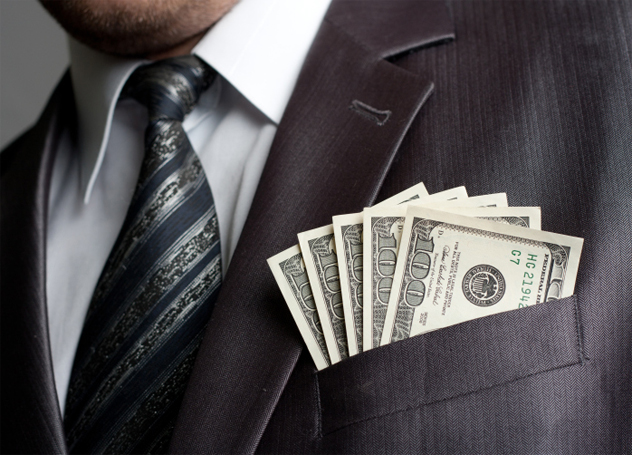
During the 1920s, Jake Guzik was the number two man in the Chicago mob, second only to Al Capone. Guzik served as Capone’s chief accountant and treasurer, and as such he was a very confident man. He’d walk around without a gun and always carried at least $1,000 in his pocket. After all, who was going to mess with Scarface’s right hand man?
As Capone’s treasurer, Guzik was the guy who took care of the bribes. If a judge needed to be bought off or a police commissioner needed a few extra bucks, Guzik would count out a couple of bills, earning him the nickname “Greasy Thumb.” However, being the man in charge of the money isn’t always a good thing. Guzik went to prison with Capone on charges of income tax evasion in 1930. Years later, he tried to distance himself from the mob and tried to present himself as a respectable businessman, but he could never escape the shadow of his Greasy Thumb persona.
9 Carmine “The Cigar” Galante
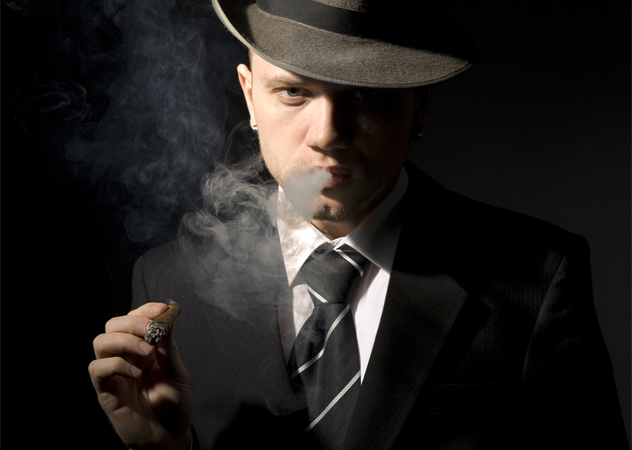
With a cigar always set firmly between his teeth, it’s no mystery how Carmine “The Cigar” Galante got his nickname. The leader of the Bonanno crime family never went anywhere without a stogie. But while nicotine might have been Galante’s drug of choice, heroin was his cash cow. During his days as a Bonanno underboss, the Cigar set up shop in Montreal, which was a key location for the French Connection, a narcotics network that smuggled heroin from France to the U.S. Galante became one of the Connection’s biggest buyers, and after a brief stint in prison on drug charges, Galante took over the Bonanno family and started making millions off his narcotics operation.
However, Galante wasn’t content just selling drugs. He wanted to be the only guy selling drugs. So the Cigar moved in on other operations, murdering anyone in his way. Naturally, with their members dying and their profits shrinking, the other families felt Galante was out of control. They summoned a meeting straight out of The Godfather and decided it was time for Galante to sleep with the fishes.
On July 12, 1979, the Cigar visited his favorite restaurant, Joe and Mary’s. While Galante relaxed on the patio in the back, a car pulled up to the front door. Three men got out, made their way to the back of the restaurant, and opened fire, sending Galante tumbling to the ground, covered in blood. When authorities arrived, they found Galante dead with a Zippo lighter in his hand and a cigar clenched between his teeth.
8 Jack “Legs” Diamond
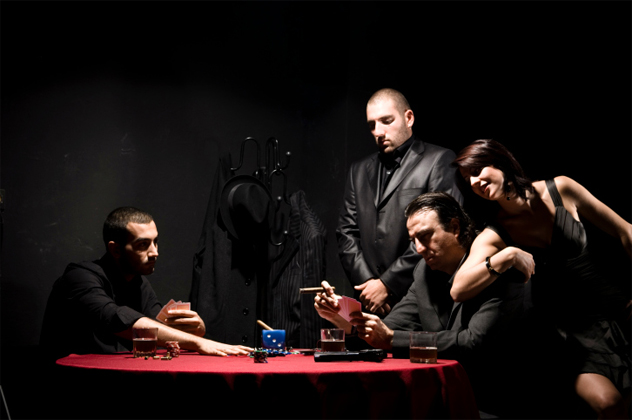
Jack Diamond was one of the original Prohibition-era gangsters. When the government outlawed the sale of alcohol, Diamond opened up a string of speakeasies, including the infamous Hotsy Totsy Club. To supply his bars with booze, Diamond and his crew held up liquor trucks, and he was known for making quick getaways, earning him the nickname “Legs.” Maybe—there’s also the possibility that his moniker came from his mad dancing skills.
Diamond earned his second nickname, “Clay Pigeon,” because he was shot so many times. Between 1927 and 1931, Diamond was shot on three separate occasions. After surviving all three attempts, Diamond started to brag, “They can’t kill Legs Diamond.” But the Clay Pigeon spoke too soon. In 1931, Diamond hijacked a liquor truck and tortured the driver. Legs was arrested for the crime and then acquitted. To celebrate, Diamond got drunk and staggered back home, where someone with a gun was waiting. This time, the Clay Pigeon wasn’t so lucky. It’s still a mystery who murdered Jack Diamond. Some say it was rival gangsters, while others suspect the cops. Whoever it was, they proved Legs Diamond couldn’t outrun death forever.
7 “Jimmy The Gent” Burke

Robert De Niro played gangster Jimmy Conway in Martin Scorsese’s classic Goodfellas, a character inspired by real-life criminal James Burke. And while De Niro was a pretty scary bad guy, Burke was way more terrifying than any movie mobster.
Burke had a rough life growing up. He was shuttled from foster home to foster home, where he suffered both physical and sexual abuse. He often ran afoul of the law, and between ages 16 and 22, he spent only 84 days as a free man. During one stint in the slammer, Burke worked as a hitman for incarcerated mobsters. Outside prison, his murderous legend grew after he chopped up his fiancé’s ex-boyfriend. Burke’s longtime associate Henry Hill (Ray Liotta in the movie) claimed that Jimmy could be nice at dinner, but “then he could blow you away for dessert.”
While he had a flair for murder, Burke’s favorite pastime was stealing. He and his crew would hit shipments leaving airports and steal whatever the trucks were carrying. During these heists, Burke would take the truck driver’s license as a way of saying, “I know where you live.” But Burke didn’t want the truck driver to feel too bad, so he’d also leave a $50 bill in the guy’s wallet, earning him the nickname “Jimmy the Gent.”
The Gent’s biggest claim to fame was the notorious Lufthansa heist, when he and a team of armed gangsters stole close to $6 million from the American government. It was the most money stolen in American history up to that point in time, and Jimmy got away clean, probably because he “silenced” a lot of the people involved. It was his murderous tendencies that got him in the end when Hill testified against Burke for the murder of drug dealer Richard Eaton. Burke spent the rest of his life in prison and died in 1996. But Jimmy the Gent’s violent legacy is making headlines even today. In July 2013, authorities found the remains of a missing mobster buried in Jimmy the Gent’s backyard.
6 “Pistol Pete” Rollack

Once the king of the Bronx, Pete Rollack is currently serving a life sentence in ADX Florence, a supermax prison reserved for the likes of Ted Kaczynski and Timothy McVeigh. Unlike some of his neighbors, Rollack’s never blown anyone up—but he’s blown quite a few people away.
In 1987, Rollack formed a gang with the rather blunt name of “Sex, Money, Murder” and established himself as a power across New York City, using extreme violence to guard his turf. To say Rollack was trigger-happy would be a slight understatement. By the time he was 24, he’d murdered four people, one just because he was a friend of Rollack’s previous victim.
The gangster’s penchant for plugging away regardless of cause earned him a scary rep and the nickname “Pistol Pete.” His notoriety also attracted attention from young men looking to make it big. In 1993, “Sex, Money, Murder” (aka S.M.M. or $.M.M.) was officially sanctioned by the Bloods, and its numbers skyrocketed into the thousands, reaching out into Philadelphia, Baltimore, and North Carolina.
Eventually, Pete was arrested and charged with drug trafficking and conspiracy, crimes to which he confessed—but not even jail could keep Pistol Pete from icing his enemies. While in a North Carolina cell, he slipped his girlfriend a coded letter that ordered the execution of two rivals during a neighborhood football game on Thanksgiving. This guy didn’t even take a break for holidays. Thanks to his bad habit of ordering hits, Rollack ended up in solitary confinement for life. Even though he’s since supposedly cleaned up his act, even writing a novel to warn young men away from the gangster life, officials refuse to let him out into the general population. Considering how many notches Pistol Pete has on his guns, that’s probably for the best.
5 Tommy “The Butcher” Pitera
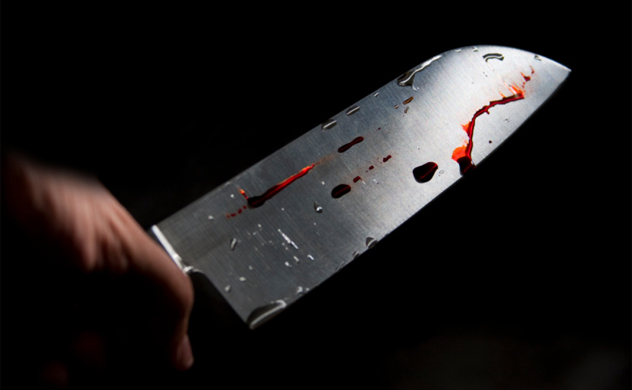
Growing up, Tommy Pitera’s squeaky voice earned him the role of neighborhood punching bag. Sick of being kicked around, Pitera started learning martial arts. He became such an enthusiast that he moved to Japan to study with the masters, and when he returned to the States in 1975, people called him “Tommy Karate.” A lot of people also started dying, which lead to his second, more gruesome nickname.
Tommy Karate became a hitman for the Bonanno crime family, but he straddled the line between contract and serial killer. After he was arrested in 1990, witnesses claimed this martial arts mobster murdered at least sixty people. After bumping off a victim, Pitera brought out his special dismembering kit, a bag full of nasty tools such as a serrated hunting knife. He’d then lug the body into a bathtub where he’d sever the head and cut the stiff into pieces.
This made it easier to get rid of the victim and made it more difficult for authorities to identify the body. It also earned him his second nickname, “The Butcher.” But these killings weren’t “strictly business,” as Pitera kept trophies of his victims. He was basically Jeffrey Dahmer with a dash of Joe Pesci.
When Pitera was finally arrested, cops raided his home and found a disturbing literary collection. Pitera kept up-to-date on the newest murder methods, and his shelves were filled with titles like The Hitman’s Handbook and Kill Or Be Killed. The Butcher was eventually found guilty of six counts of murder and is currently spending time in a penitentiary in Pennsylvania, where he has plenty of time to practice his crane kicks.
4 Kazuo “The Bear” Taoka
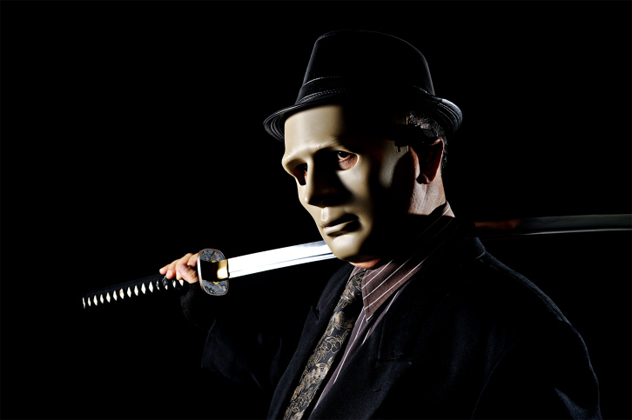
The Italian Mafia seems to have a monopoly on crazy nicknames, but the Japanese Yakuza has a few colorful characters as well. Crime boss Yoshinori Watanabe was known as “Mr. Gorilla,” and mobster Hisayuki Machii was called “The Ginza Tiger.” But perhaps the coolest Yakuza nickname belonged to mob boss Kazuo Taoka, head of the Yamaguchi-gumi, Japan’s largest criminal organization.
Orphaned at an early age, Taoka grew up in the rough-and-tumble world of the Kobe docks. Raised by gangsters, Taoka rose to fame as a street fighter where he became known for gouging out his enemies’ eyes with his fingers. This trademark technique earned Taoka the nickname “Kuma,” Japanese for “The Bear.” The Bear quickly rose through the ranks of the Yamaguchi-gumi, becoming the oyabun (don) by the time he was 33.
After WWII, the Yamaguchi-gumi was in disarray. Thanks to the Bear’s leadership skills, the gang’s membership skyrocketed, and they began muscling other Japanese and Korean gangs out of the way. The Yamaguchi-gumi took over all of the loan sharking, gambling, and prostitution rackets, and they even moved into Japan’s entertainment industry.
Eventually, Tokyo’s most powerful gang, the Inagawa-kai, decided it was better to ally with the Bear than fight him. This gave Taoka control of all but four of Japan’s prefectures. There are 47 prefectures in Japan, so yeah, this guy had some influence. Taoka was not a man to be messed with—he was so tough that at the age of 65, he survived a .38 caliber bullet to the neck. The Bear lived to be 68 before he finally succumbed to a heart attack, leaving behind the most powerful gang in Japan.
3 Tony “Big Tuna” Accardo
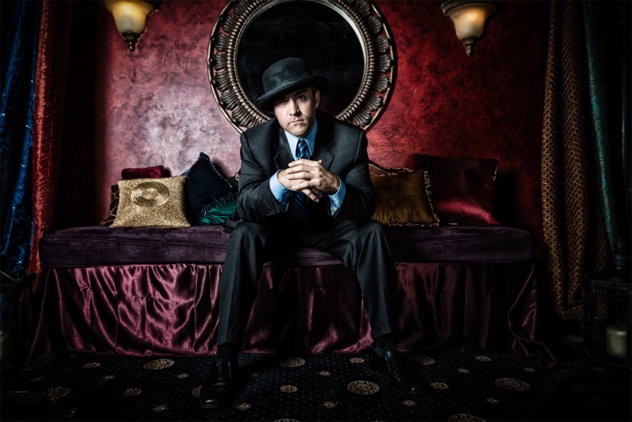
Tony Accardo was gangster royalty, the second man to run the Chicago mob after Al Capone (the first being Paul “The Waiter” Ricca). Before his rise to power, Accardo worked as Capone’s bodyguard, and on February 14, 1929, Accardo and three others disguised themselves as police officers and murdered seven thugs in the St. Valentine’s Day Massacre. However, Accardo’s preferred weapon wasn’t a Tommy gun. When two guys betrayed the gang, Accardo was sent to smooth things out—with a baseball bat. Accardo’s hitting skills earned him the name “Joe Batters.”
Accardo earned his second nickname while on a fishing trip off the coast of Florida. He had his picture taken after reeling in a 180 kilo (400 lb) tuna, and soon the newspapers started calling him “Big Tuna.” Big Tuna moved away from racketeering and toward slot machines, wire services (used by bookies), and drugs. He earned the mob millions, but he never admitted to being a mob boss and denied involvement in any criminal activity until the day he died. The U.S. Senate investigated him three times, and he never cracked under pressure. In fact, Accardo claimed that he never served a night in jail. This was one tuna that couldn’t be caught.
2 John “White Devil” Willis
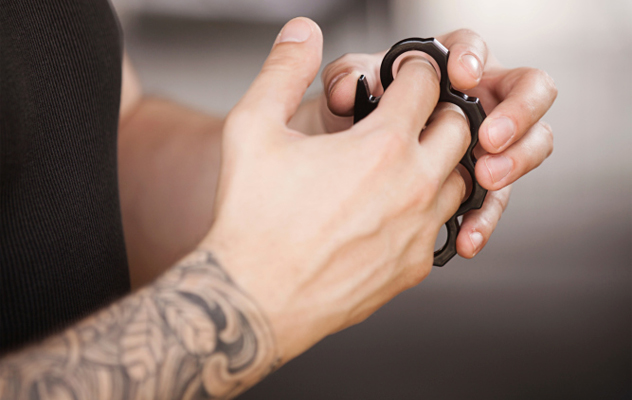
In the 1980s and 90s, Boston’s Chinatown was ruled by the Ping On gang. Led by Stephen Tse (known by the awesome moniker of “Sky Dragon”), the Ping On mob ran your normal assortment of gangster enterprises, aka gambling, prostitution, and extortion. Initiates eager to join the gang swore a total of 36 oaths and drank the blood of a decapitated chicken mixed with their own. And as it goes with most criminal organization, the Ping On gang was a pretty homogeneous bunch—except for John Willis, a white guy.
Willis lost his mother and brother at a young age and was subsequently raised by a Chinese-American family who taught him to speak Cantonese as well as Toisanese and Vietnamese. Armed with an impressive set of language skills, the young teen entered Boston’s Asian underworld and joined the Ping Ons.
Despite his skin color, Willis became a trusted enforcer and was known about town as the man who tracked down offenders and beat them to a pulp. He had the Chinese characters for “strength” and “righteousness” tattooed to his left arm, and thanks to his skin color, he was nicknamed “Bac Guai,” which is Cantonese for “White Devil.”
While the Ping On gang eventually faded, White Devil John remained an influential mobster in Chinatown’s drug scene. He ran a national oxycodone ring, laundered money, and lived a life that would’ve been the envy of Tony Montana, stocking his Florida home with flashy cars, motorcycles, and expensive boats. That is, until the FBI knocked on his door in 2011. “Bac Guai” pleaded guilty to a long list of crimes in 2013, earning himself 20 years behind bars, and saw most of his gang end up in prison as well. Will the White Devil ever return to his former glory? Forget it, John. It’s Chinatown.
1 Leroy “Nicky” Barnes, Mr. Untouchable
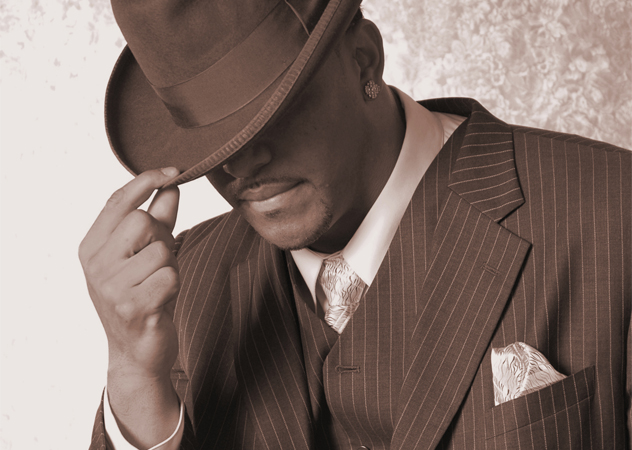
Leroy “Nicky” Barnes is probably the only gangster in history whose nickname led to his downfall. Born in 1933, Barnes grew up dealing smack and getting high on his own supply, and during the 1950s and 60s, he spent a lot of time in prison. In 1966, he met mafioso “Crazy Joe” Gallo in Green Haven State Prison, and the old pro took Nicky under his wing. He taught him how to properly structure his organization, used his lawyer to get Barnes out of jail, and then began supplying him with heroin in exchange for a cut of the proceeds.
Barnes was a quick learner. He modeled his gang after the Italian mob and, taking a page from the Stringer Bell handbook, formed a group called the “Council,” which was like an underworld U.N., a body that settled disputes between gangs and set up rules about how to behave in a businesslike manner. Barnes’s organization soon took over New York’s African American communities, and thanks to his savvy skills, he was able to live a life of gaudy splendor. Barnes threw parties on skyscrapers, bought five houses, drove multiple Citroen-Maseratis and Mercedes, and owned 300 tailor-made suits, 60 pairs of custom-made shoes, and 27 leather coats.
In addition to being a big spender, he was extremely cocky. He was a guy who enjoyed taunting police officers just because he could get away with it. Even though he was arrested several times during the 1970s, he always managed to beat the rap, thus earning the nickname “Mr. Untouchable.”
It was in 1977 that Barnes’s confidence got the best of him. While facing charges of narcotics conspiracy, he agreed to appear on the cover of the New York Times. The editors cajoled him into having his picture taken, threatening to run a mug shot of him if he didn’t cooperate. Rather than look bad, Barnes wore a denim suit, an American flag tie, and a smug grin. The Times ran the photo with the title “Mister Untouchable,” and eventually the magazine ended up in the hands of President Jimmy Carter. Infuriated with Barnes’s cocky demeanor and audacious nickname, Carter ordered the Justice Department to prosecute Barnes to the “fullest extent of the law.” By the time the trial was over, Mr. Untouchable had been sentenced to life in prison without parole.
However, Barnes didn’t stay imprisoned for long. Convinced his lawyers were cheating him and that one of his lieutenants was sleeping with his favorite mistress (or perhaps because he didn’t like prison), Barnes agreed to testify against his associates. His testimony put 14 gangsters behind bars, and he was then released into a witness protection program in 1998. Since then, Barnes has led a crime-free life and currently works at an undisclosed—yet average—job. Despite his downfall, Barnes has ended up pretty well for a murderous drug dealer. Considering the fate of most mobsters, Barnes really is untouchable.
Nolan Moore once tried to grow a mustache, but it didn’t exactly work out. As a result, he was nicknamed “Whiskers.”








